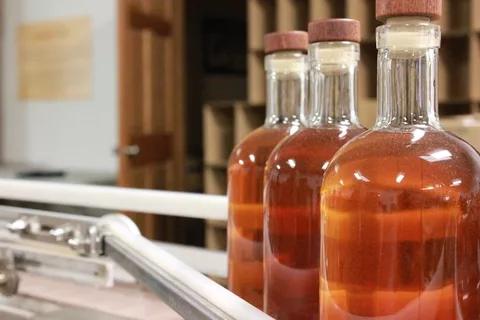
This is a question we get a lot. As with most questions in life, the answer is “maybe.” We can say, more often than not, bottling equipment does not have to be in a hazardous occupancy.
Where International Code Council (ICC) Building Codes or National Fire Protection Association (NFPA) Life Safety Codes are concerned the use of spaces/ rooms/ buildings are assigned an occupancy classification based on the activity inside the space. Where the activity is ‘manufacturing alcoholic beverages over 16% ABV’ the occupancy classification is ‘F-1’ (Factory) in the IBC or ‘Industrial’ in NFPA 101.
‘Storage of alcoholic beverages over 16% ABV’ would be – you guessed it – ‘Storage’ in either the ICC code or the NFPA code.
A Factory occupancy, Storage occupancy, or any other type of occupancy must become or convert to a hazardous occupancy if the Maximum Allowable Quantities (MAQs) of hazardous materials are exceeded. In a non-sprinkled building – or control area – within a building, the MAQ for alcohol over 20% ABV, at sea level, is 120 gallons. If the building is fully sprinkled, this limit doubles to 240 gallons. If MAQs are exceeded, the occupancy – in most cases – must become H-3. Once the spirit is capped in a 5-liter or smaller bottle, the spirit no longer counts toward the MAQs.
Most micro-distillery bottling equipment (from a 2-position hand filler all the way up to a 100′ long automated filling system) includes a small reservoir of 10-30 gallons that feeds product directly into the bottle filler apparatus. This bottling process is a Factory/Industrial occupancy. It is absolutely not an H-3. In fact, there could be a small stainless steel tote or a couple of barrels in the room as well. So long as the aggregate volume of alcohol over 20% ABV – outside sealed bottles – remains under the established MAQs.
Many – if not most – micro distillers bottle batches of product in excess of 120 or 240 gallons. Somewhere there is usually a larger vessel that feeds the 10-30 gallon bottling machine reservoir. If this were to be located in the same room as the bottling equipment, it would trigger the H-3 occupancy designation (or compliance with NFPA High Hazard Level 3 Contents requirements). But, if this large tank is in a fire-rated H-3 room or outside of the building, with spirit pumped through hoses and/or pipes to the bottling line, then bottling can remain an F-1 occupancy.
Although there are exceptions and every situation is different, the go-to answer for most distilleries is that bottling is not in an H-3 occupancy.
Please note that the terms ‘occupancy’ and ‘use’ are found elsewhere in codes related to zoning, classified electrical, sprinkler, design and other issues. While there may be some correlation between these issues and the IBC/NFPA 101 Occupancy Classifications, they are separate (but related) issues. For instance, classified electrical areas can exist outside of H-3 occupancies.